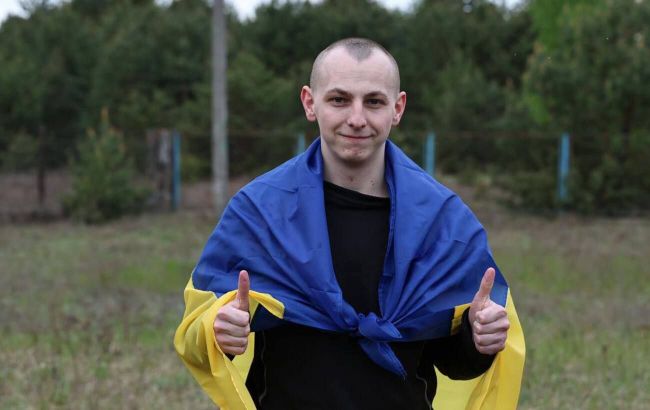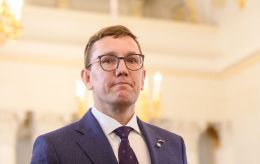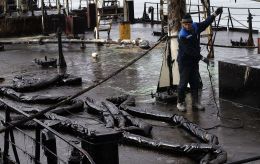Ukraine and Russia prepare for large POW exchange: What we know so far
 Photo: a soldier released from Russian captivity during the exchange on May 6 (t.me/V_Zelenskiy_official)
Photo: a soldier released from Russian captivity during the exchange on May 6 (t.me/V_Zelenskiy_official)
Nearly a week ago, Ukraine and Russia agreed to a prisoner exchange in a 1000-for-1000 format. Since then, both sides have been actively preparing for its implementation and have already exchanged lists.
RBC-Ukraine has compiled everything that is currently known about the preparations for the exchange, which will be the largest since the beginning of the full-scale war.
Key questions:
-
Who initiated the 1000-for-1000 exchange?
-
What stage is the preparation at now?
-
Who will be included in the exchange lists?
-
When might the exchange take place?
-
What contradictions have arisen between Ukrainian and Russian statements about the lists?
-
How is the Ukrainian side preparing?
How was the agreement reached, and what is known about it?
The agreement for the simultaneous release and exchange of prisoners in the 1000-for-1000 format was reached during a meeting between Ukrainian and Russian delegations in Istanbul on May 16.
This meeting between Ukraine and Russia was the first in three years, and, as President Volodymyr Zelenskyy noted, the agreement on a large-scale exchange became one of the few tangible outcomes of the Russian-Ukrainian meeting in Türkiye.
The first to announce this agreement was Ukraine’s Defense Minister Rustem Umerov, the head of the Ukrainian delegation in the negotiations with the Russian side in Istanbul. Immediately after the meeting with the Russian delegation, during a brief conversation with journalists, he stated that Ukraine was preparing for a large-scale prisoner exchange with Russia in a 1000-for-1000 format.
That same day, May 16, the head of the Russian delegation, Vladimir Medinsky, also appeared before the cameras. He said that Russia was satisfied with the outcome of the negotiations with Ukraine and was ready to continue contacts. He confirmed that the two sides had agreed on a prisoner exchange in the 1000-for-1000 format.
Later that evening, Vadym Skibitskyi, a representative of the Defense Intelligence of Ukraine who also participated in the negotiations with Russia, said that Ukraine had begun working through the lists of individuals who would be returned home.
The Security Service of Ukraine (SSU) also announced it was preparing for the exchange. In particular, the Joint Center for the Coordination of the Search and Release of Prisoners under the SSU had begun its work.
"In addition, the SSU, together with the Ministry of Health and all relevant state bodies, is preparing to receive Ukrainian soldiers currently held in enemy captivity. Among other things, appropriate infrastructure, locations, and medical personnel are being prepared to receive, accompany, and rehabilitate our servicemen," the SSU stated.
The proposal for the exchange, according to CNN, citing an unnamed Turkish official, came from Türkiye. It was present during the direct negotiations between Ukraine and Russia.
"At a moment where it seemed like there was an impasse, we suggested the POW exchange that will include three categories – children, civilians and soldiers. The Ukrainian side went out to get approval for it," the official noted.
How is the preparation for the large-scale exchange progressing and what stage is it at?
Two days after the agreement, Defense Minister Rustem Umerov announced that a step-by-step plan had been coordinated for implementing the 1000-for-1000 prisoner exchange. He said that during a briefing with the President, he provided detailed information about the outcomes of the negotiations in Türkiye and outlined the next steps.
"All key institutions have been involved: the Ministry of Defense, the Defense Intelligence, the Security Service, the Foreign Intelligence Service, the Ministry of Internal Affairs, and the Office of the Human Rights Commissioner. A step-by-step implementation plan has been agreed upon, taking into account security, humanitarian, and logistical aspects, as well as tasks for the coming days. Our goal remains the same: to bring everyone home," the Defense Minister wrote on Facebook.
During a recent press briefing, the President of Ukraine confirmed that this exchange format applies specifically to prisoners of war.
In response to a question, the head of state emphasized that prisoner swaps should apply only to military personnel, while civilians and children must be returned unconditionally.
"I don’t want to go into details right now. We do not support the idea of exchanging children for soldiers. Children must return. It’s unjust, it’s outside the law, even outside the laws of war. The group led by Umerov, along with representatives of the security services and intelligence agencies, is working based on these principles," Zelenskyy said.
When will the large-scale exchange take place?
On the day of the negotiations with Russia, when Umerov announced the exchange, he stated that the exact date had already been set. However, the minister did not disclose it, only noting that the exchange is expected to happen in the near future.
The head of Ukraine’s Defense Intelligence, Kyrylo Budanov, expressed hope that the process would take place within the week.
"Regarding the lists - you understand, the exchange will happen like this: whoever we can retrieve, we will retrieve. And we’ll return the same way," Budanov said.
When asked whether he sees realistic prospects for the exchange to happen, Budanov replied, "I don't see any particular problems for it."
Meanwhile, in Russia, officials suggested that the 1000-for-1000 exchange could stretch over several days. State Duma deputy Shamsail Saraliyev claimed it would be technically difficult to carry out in one day, so the process will be spread out over several days.
Some pro-Kremlin media even reported preliminary dates between May 23 and 25.
Officially, however, the Kremlin has stated that it is interested in a swift process.
Have the sides exchanged lists?
During his evening address yesterday, President Zelenskyy said he receives daily reports on the progress of the exchange process. He emphasized that each name involved in the preparation is being thoroughly verified.
Today, following another coordination meeting, the Ukrainian President confirmed that Russia has provided Ukraine with a list for the prisoner exchange in the 1000 for 1000 format.
"We are clarifying the details for each individual included on the lists submitted by the Russian side. Returning all of our people from Russian captivity is one of Ukraine’s key objectives," Zelenskyy noted.
The Kremlin also confirmed that the Russian side handed over a list of individuals for the exchange. The spokesperson for the Russian leader, Dmitry Peskov, stated that Moscow was still waiting for a list from Ukraine.
However, Andrii Yusov, Deputy Head of the Coordination Headquarters for Prisoner of War Affairs, told RBC-Ukraine that Ukraine had already submitted its list, contradicting Peskov’s claim that Kyiv had not yet done so.
Later, the Kremlin confirmed receipt of Ukraine’s list.
"Yes, we have now received it," Peskov told pro-Kremlin media.
In light of this, Head of the Ukrainian Presidential Office Andriy Yermak announced that Ukraine had completed its part of the preparation for the large-scale 1000 for 1000 exchange and called on Russia to expedite the implementation of the agreement.
"Regarding the 1000-for-1000 exchange, Ukraine has completed its share of the preparatory work. Russia needs to move faster," Yermak wrote on his Telegram channel.
The last exchange of prisoners between Ukraine and Russia took place on May 6, 2025. Back then, 205 soldiers were returned home.
In total, it was the fifth since the beginning of this year and the 64th since the beginning of Russia's full-scale invasion of Ukraine.
Since March 2022, the Coordination Center has released a total of 4,757 Ukrainian citizens through negotiations and exchanges.
The Ukrainian Parliament Commissioner for Human Rights, Dmytro Lubinets, said that the UAE is currently the main mediator in the return of Ukrainians from Russian captivity.

